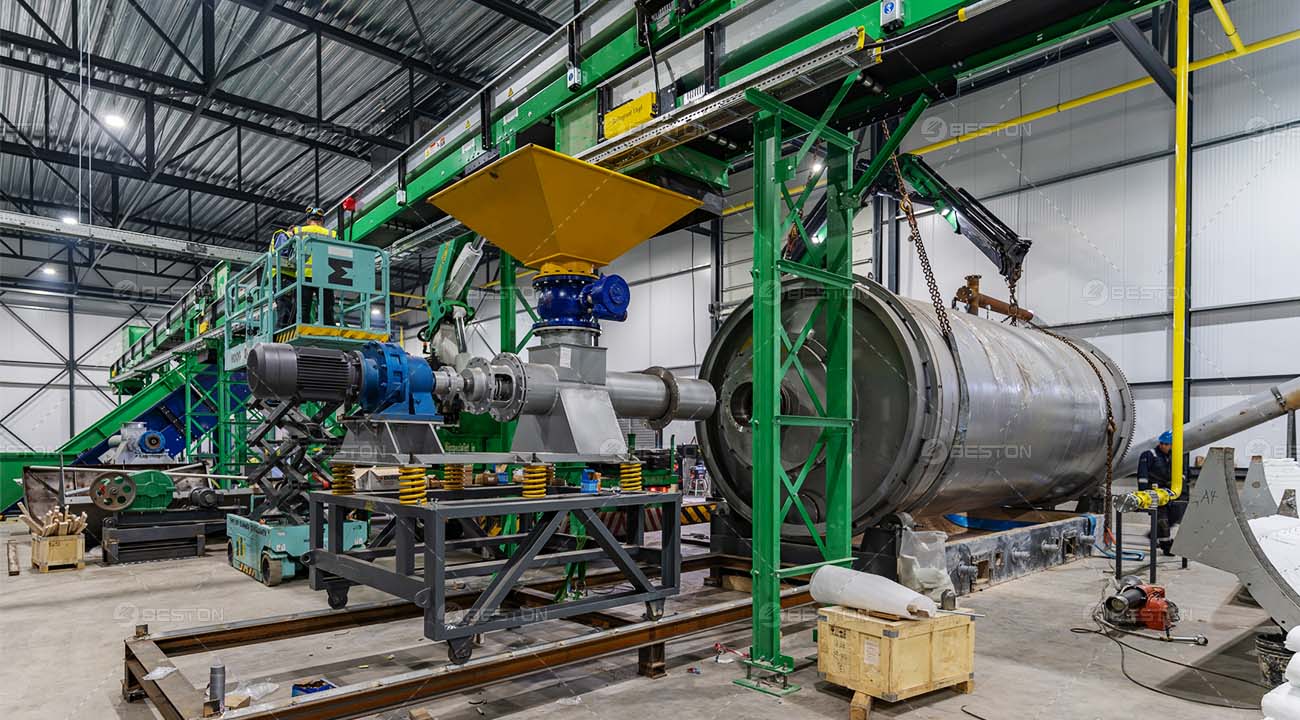Introduction
Pyrolysis technology, a pivotal player in waste management and resource recovery, offers two primary plant options: Continuous Pyrolysis Plants and Skid-mounted Pyrolysis Plants. The decision to choose between them is crucial for maximizing efficiency and meeting specific operational needs.
Continuous Pyrolysis Plant
Definition and Operating Mechanism
Continuous Pyrolysis Plants boast a streamlined operational process, with a continuous feed system ensuring uninterrupted waste processing. This real-time mechanism significantly enhances overall processing efficiency.
Continuous Feed System
In a Continuous Pyrolysis Plant, the continuous feed system allows for a seamless input of waste materials, eliminating the need for frequent stops and starts during the process.
Real-time Processing Efficiency
The ability to process waste materials in real-time ensures a consistent and efficient production flow, making Continuous Pyrolysis Plants suitable for high-capacity operations.
Key Advantages
Continuous Pyrolysis Plants offer several advantages, including uninterrupted production and enhanced automation features.
Uninterrupted Production
The continuous nature of the plant’s operation ensures a steady output, reducing downtime and increasing overall productivity.
Enhanced Automation Features
Automation plays a crucial role in Continuous Pyrolysis Plants, minimizing the need for manual intervention and optimizing the efficiency of the entire process.
Operational Challenges
However, challenges such as initial capital investment and maintenance considerations need to be considered.
Initial Capital Investment
The implementation of Continuous Pyrolysis Plants requires a significant initial investment, which may pose a challenge for some businesses.
Maintenance Considerations
The continuous operation necessitates regular maintenance to prevent breakdowns and ensure the plant’s longevity, adding to the overall operational cost.
Skid-mounted Pyrolysis Plant
Definition and Modular Design
Skid-mounted Pyrolysis Plants, on the other hand, feature a modular design that offers a compact footprint and scalability.
Compact Footprint
The modular design allows Skid-mounted Plants to occupy a smaller footprint, making them suitable for locations with limited space.
Scalability
The modular nature of Skid-mounted Plants enables easy scalability, allowing businesses to adjust processing capacity as needed.
Advantages in Portability
Skid-mounted Pyrolysis Plants excel in portability, providing quick installation and flexible deployment options.
Quick Installation
The modular design facilitates rapid installation, reducing downtime and enabling swift commencement of operations.
Flexible Deployment Options
The portability of Skid-mounted Plants allows for easy relocation, offering flexibility in choosing operational sites.
Limitations
However, these plants come with limitations, including batch processing and potential downtime during relocation.
Batch Processing
Skid-mounted Plants typically operate in batches, which might lead to intermittent processing and slower overall production rates.
Potential Downtime During Relocation
While portable, the process of relocating a Skid-mounted Plant may incur downtime, impacting operational continuity.
Economic Considerations
Cost Analysis
Analyzing the economic aspects involves considering both initial investment and ongoing operational expenses for each type of plant.
Initial Investment
Continuous Pyrolysis Plants usually require a higher initial investment, while Skid-mounted Plants offer a more cost-effective entry point.
Operational Expenses
Ongoing operational expenses, including maintenance and energy consumption, should be factored into the overall cost analysis.
Return on Investment
Evaluating the return on investment entails considering long-term sustainability and comparative financial viability.
Long-term Sustainability
Continuous Pyrolysis Plants, with their high efficiency, may provide a more sustainable long-term solution, potentially justifying the initial investment.
Comparative Financial Viability
Comparing the financial viability of both options involves weighing the initial costs against the operational efficiency and longevity of the chosen plant type.

Environmental Impact
Emission Control Measures
Examining the environmental impact involves assessing the emission control measures employed by each type of plant.
Continuous Plant Emission Controls
Continuous Pyrolysis Plants often feature advanced emission control measures, reducing their environmental footprint.
Skid-mounted Plant Emission Control
Skid-mounted Plants may implement efficient emission control, but the effectiveness can vary based on the specific design and technology employed.
Energy Efficiency
Considering energy efficiency is crucial for minimizing environmental impact and optimizing resource utilization.
Continuous Process Optimization
Continuous Pyrolysis Plants, through their real-time processing, can optimize energy consumption and enhance overall efficiency.
Skid-mounted Plant Efficiency Measures
Skid-mounted Plants, with their modular design, implement efficiency measures to optimize energy consumption and reduce environmental impact.
Decision-making Factors
Industry-specific Requirements
Considering the unique requirements of different industries is crucial for selecting the appropriate pyrolysis plant.
Waste Composition
The composition of waste materials varies across industries, influencing the choice between continuous and small pyrolysis machine.
Desired Output Capacity
The desired output capacity of the pyrolysis process plays a pivotal role in determining the most suitable plant type for a specific industry.
Future Expansion Considerations
Considering future expansion is essential for ensuring long-term sustainability and adaptability to changing needs.
Scalability and Flexibility
Both Continuous and Skid-mounted plants offer scalability, but the level of flexibility may differ, impacting future expansion plans.
Technological Upgrades
Assessing the potential for technological upgrades is crucial for staying competitive and adopting advancements in pyrolysis technology.
*In conclusion, the choice between Continuous Pyrolysis Plants and Skid-mounted Pyrolysis Plants depends on various factors, including the nature of the waste, operational requirements, economic considerations

Comments
No comments yet. Be the first to react!